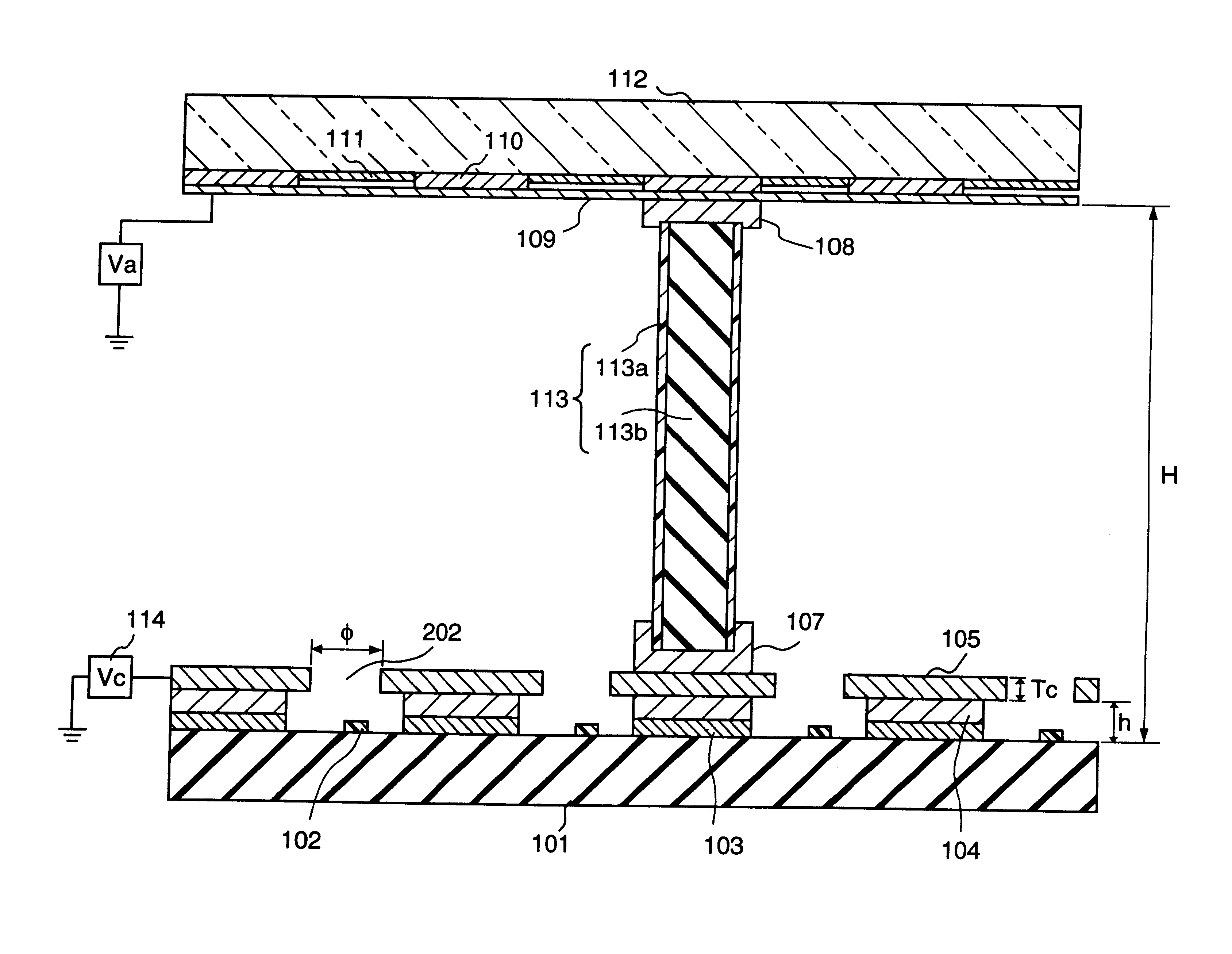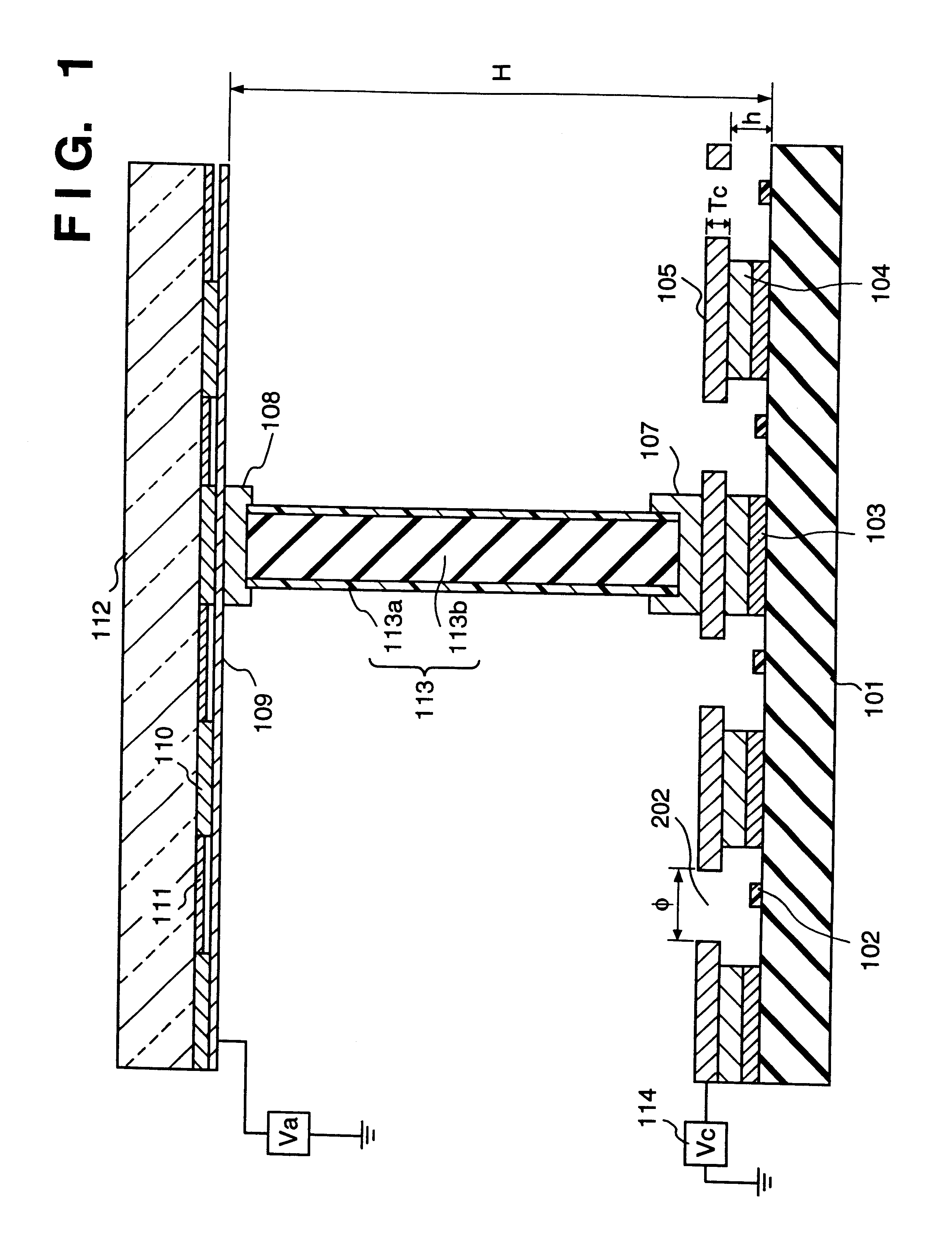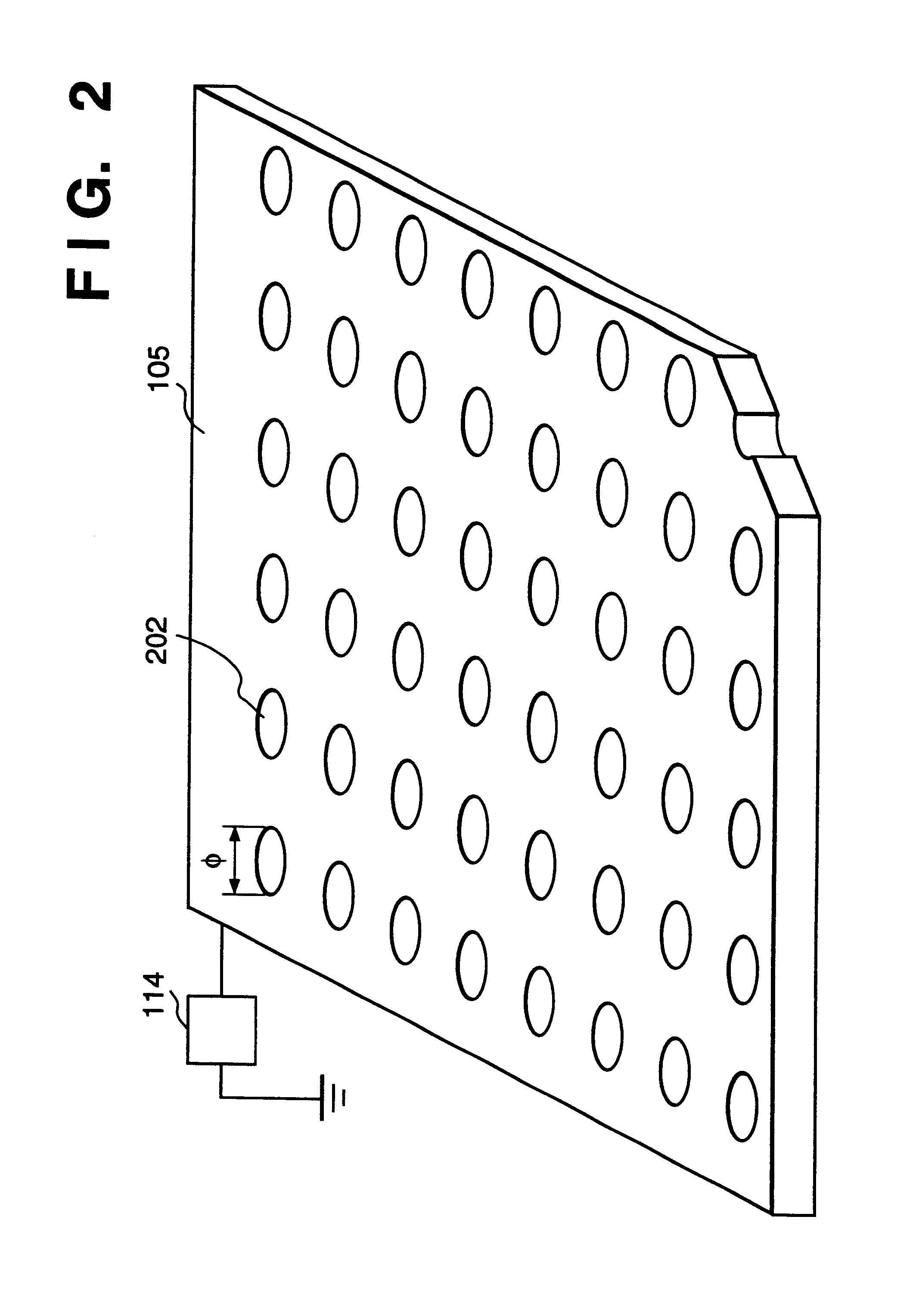Image forming apparatus
a technology of forming apparatus and forming tube, which is applied in the direction of discharge tube luminescnet screen, tube with electrostatic control, tube with screen, etc., can solve the problems of weight, cathode electron-emitting device rapid response, and substrate heat melting not easy to occur
- Summary
- Abstract
- Description
- Claims
- Application Information
AI Technical Summary
Benefits of technology
Problems solved by technology
Method used
Image
Examples
first embodiment
[First Embodiment]
A first embodiment will be described in accordance with FIGS. 1-2, 9-11 and 13-19.
First, the basic structure of a display panel of a display apparatus will be described with reference to FIGS. 1 and 2. The structure and manufacturing method of the support members and potential-defining electrodes will be described in detail.
Then, a desirable shape of the second support members will be described with reference to FIGS. 13 and 14.
Next, the structure, manufacturing method and characteristic of the electron-emitting devices will be described with reference to FIGS. 9, 10 and 19.
Next, the construction and driving method of a multi electron-beam source having a matrix-wired electron-emitting devices will be described with reference to FIGS. 11, 16 to 18.
Finally, the construction of the display device circuit will be described with reference to FIG. 15.
First, the most characteristic feature of the present embodiment will be described using FIGS. 1 and 2. FIG. 1 shows the ...
second embodiment
[Second Embodiment]
FIG. 3 shows an image forming apparatus using the SCE type electron-emitting devices according to the second embodiment of the present invention. The present embodiment differs from the first embodiment, in that the potential-defining electrode 105 are formed only between the spacers 113 as the second support members, covered with the conductive films 113a, and the row-direction wiring electrodes 103. As the other parts of the structure are the same as those in the first embodiment, the explanation of those parts will be omitted. It has been confirmed the present embodiment has similar advantageous features to those in the first embodiment.
third embodiment
[Third Embodiment]
FIG. 4A shows a schematic perspective view of the image forming apparatus according to the third embodiment of the present invention. FIGS. 4B and 4C show cross-sectional views cut along a lines I--I and II--II in FIG. 4A respectively. In these figures, numeral 401 denotes a substrate; 404, column-direction wiring electrodes; 403, row-direction wiring electrodes formed on the column-direction wiring electrodes 404 via a insulating layer (not shown); 405, an insulating layer of frit glass; and 402, electron-emitting devices respectively having an electron-emitting portion 412. The electron-emitting devices 402 are electrically connected with the row-direction wiring electrodes 403 and the column-direction wiring electrodes 404, formed by screen printing silver (Ag) paste ink, via connection lines 406. Numeral 407 denotes a potential-defining electrode provided on the row-direction wiring electrodes 403 via the insulating layer 405. Different from the first embodimen...
PUM
 Login to View More
Login to View More Abstract
Description
Claims
Application Information
 Login to View More
Login to View More - R&D
- Intellectual Property
- Life Sciences
- Materials
- Tech Scout
- Unparalleled Data Quality
- Higher Quality Content
- 60% Fewer Hallucinations
Browse by: Latest US Patents, China's latest patents, Technical Efficacy Thesaurus, Application Domain, Technology Topic, Popular Technical Reports.
© 2025 PatSnap. All rights reserved.Legal|Privacy policy|Modern Slavery Act Transparency Statement|Sitemap|About US| Contact US: help@patsnap.com



